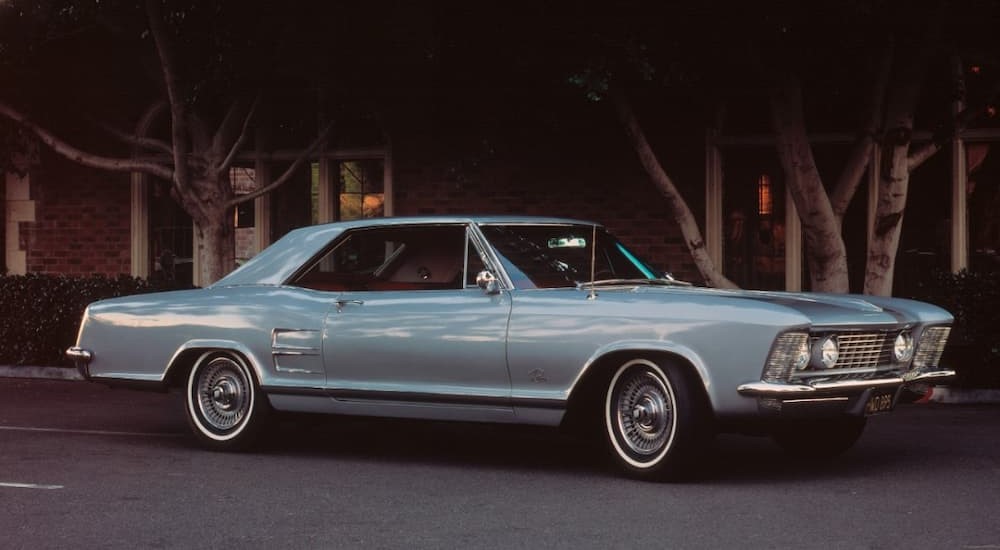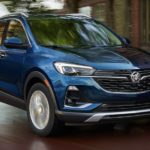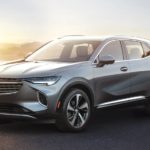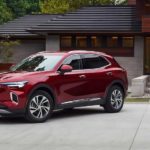Every now and then, an automaker hits the sweet spot, producing a vehicle that’s more than just a vehicle: it’s a symbol of an era. Iconic vehicles are not only timeless but sought after years beyond their expiration dates. Skim a used Buick dealer’s inventory, and you might find such a vehicle if you’re lucky. As one of the oldest automotive brands on the planet, Buick has a long history of building cars with enduring legacies.
Which features earn a car icon status? It’s the usual––performance and style––but beyond the obvious reasons lies the true magic. These vehicles influence modern designs sometimes for decades after they’ve exited the production line. Some iconic vehicles, like the Buick Grand National, have brief production runs of only a few years, while others, the Buick Riviera, enjoy decades of robust sales before being retired.
Because these cars are so different, it’s hard to pinpoint the common denominator that sets them up for timelessness. Perhaps scarcity breeds longing, or maybe, in Buick’s case, it has to do with pride in American manufacturing. Regardless, the list of iconic vehicles is incredibly short, and three of them bear the Buick nameplate. Here’s a nostalgia-tinted look in the rear-view mirror at three Buick classics––the Riviera, the Roadmaster, and the performance-oriented Grand National.
Buick Riviera: Luxury and History Collide
The Riviera began its reign as a trim of the popular Roadmaster. It wasn’t until 1963 that Buick made the Riviera a standalone model. Making a grand entrance on its own in 1963, the Buick Riviera was launched to steal market share from the wildly popular Ford Thunderbird. Unique for its innovative design, luxury features, and impressive performance, the Riviera’s svelte lines were a breath of fresh air at a time when American luxury cars were typified by their bloated, clunky size and ostentatious fit and finish.
The Riviera, different in most ways from the competition, oozed classiness with a hint of personality borrowed from Europe’s grand touring cars. Known for its “knife-edge” design, the first-generation Riviera (1963-1965), named for the Italian coastline, a geographic area known for its beauty and the affluence of its residents, featured flared fenders and a big-block V8. The 1965 Buick Riviera, still a sought-after model in the classic car marketplace today, was offered in a Gran Sport trim that came with a dual exhaust, a performance suspension, and headlights hidden behind “clamshell” doors on opposite ends of the fender.
Automotive journalists praised the Riviera for its smooth-riding road manners and intuitive dash. Comfort became a theme among reviewers, who also lauded the Riviera for its crisp, efficient handling. Ultimately, the Riviera would stand the test of time for nine generations. In 1999, Buick retired the nameplate for good but occasionally teases the public with concept Rivieras, like the one showcased at the 2013 Shanghai International Auto Show. Still, there’s no word on when, or if, a new Buick with the Riviera name will hit the showroom floor.
Buick Roadmaster: Embrace the Station Wagon
Nothing says nostalgia like a station wagon. Like today’s ubiquitous SUVs, these old-school people movers could be found in driveways across America throughout much of the 1950s and again in the 1990s. Though the Roadmaster brand became synonymous with wood-paneled station wagons, the vehicle’s earlier versions were all about driver-centric luxury. Launched in the early 1930s, the original Roadmaster oozes Monopoly-money vibes with its white wall tires and long, boxy curb profile.
In the late thirties, Buick transformed the Roadmaster into a convertible version. With four doors and hints of a fastback design, the convertible sat alongside a sedan version and anchored the Buick line. Throughout the 1940s, Buick continued to refine its eye-catching Roadmaster with shorter wheelbase versions and innovative two-piece windshields. It would eventually feature Buick’s signature “VentiPorts,” small holes along the side body panels framed in chrome and designed to cool the engine.
By the mid-fifties, Roadmasters were seen with two-tone paint and glamorous grille designs. All along, Buick outfitted its Roadmasters with powerful V8 engines that delivered upwards of 300 ponies of power, but by 1959, Buick gave up on the Roadmaster. It wouldn’t resurface again until 1991, and when it did, the flash and high-end luxury vibe all but disappeared. A short five-year production run started in 1991 when the newest Roadmaster hit dealerships in station wagon form. A year later, Buick added a sedan version.
Thanks to its bulbous styling and massive 5.7-liter V8, the last-ever 1996 Roadmaster Estate Wagon could capably tow the family boat, but this capability wouldn’t help the Roadmaster’s longevity. Buick pulled the plug on the once-popular model for good at the end of the 1996 model year. Despite the plethora of SUVs crowding the country’s highways and driveways, it could be that families are becoming a little bored. Could it be time to reintroduce the classic family station wagon?
Buick Grand National: A Modern Muscle Car
Any discussion about Buick’s history of building performance-oriented vehicles would be incomplete without mentioning the Grand National. Born in the 1980s, a time of Reagan-era excess, the Grand National can best be described as a beast in a tuxedo; a true muscle car that embraced high-end luxury and enough old-school go-fast pony car styling to give it one of the most unique curb profiles of its time. Yet another Buick with a short production run, the Grand National had a six-year lifespan. Considered a high-performance version of the luxurious Regal, the Grand National was named to celebrate the automaker’s victories at the NASCAR Grand National Series.
Powering Buick’s luxury performance sedan was a turbocharged V6, the most powerful of which was capable of making 276 horsepower and 360 lb-ft of torque. Clocked at a zero-to-sixty time of under five seconds, the Grand National earned a reputation for being quick off-the-line, which eventually led to an increasing number of winning appearances at the country’s drag strips. With an exclusively black paint scheme and an angry, aggressive stance, the Grand National embodied Buick’s commitment to raw performance.
What made the Grand National so unique wasn’t its raw power; it was the way Buick married that power with uncommon luxury. Equal parts luxury and performance, the 1987 Buick GNX, a limited-run special Grand National trim, became known as the “velvet hammer” among automotive journalists. The plan was to only make 500, which was an homage to the Indy 500 and the Daytona 500, according to Mike Doble, Buick’s advanced concepts manager at the time, but 547 eventually left the production line.
Car and Driver called the Grand National the “last old-school American muscle car.” After a grand finale with the powerful GNX, Buick retired the Grand National in favor of more practical models. With so few available, the Grand National continues to be hit on the classic car market. Perhaps it’s time to bring the beloved muscle car back––possibly as an EV version.
The Enduring Buick Legacy
Looking back on Buick’s varied history, it’s evident that the automaker’s reputation for building iconic vehicles is well-earned. Buick’s legacy is filled with models that have left an indelible mark on the automotive landscape. The elegant Riviera, the evolving Roadmaster, and the street-savvy Grand National are just a few of Buick’s notable triumphs. Other models like the Electra and the Skylark also occupy a prominent place in automotive history.
In a time when vehicle design feels a little too homogenous, reintroducing iconic Buick models is just what the industry needs to spark America’s love for the automobile. Buick’s unique ability to blend luxury and performance into a winning design is evident across the current lineup, but pulling in the history associated with its storied past could attract a whole different buyer to the premium Buick brand.




